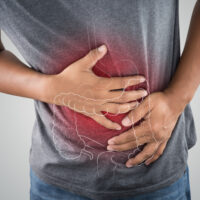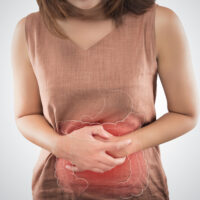Digital Marketing Jobs: An In-Depth Guide to Opportunities and Roles
The world of digital marketing has seen tremendous growth over the last decade, revolutionizing the way brands connect with consumers. As more businesses embrace online platforms to reach their audiences, the demand for skilled digital marketing professionals has skyrocketed. This article explores the various digital marketing job roles, key skills required, and the career potential in this dynamic industry.

Importance of digital marketing
Digital marketing refers to all marketing efforts that use the internet or electronic devices to reach consumers. This includes channels like social media, search engines, email, websites, and mobile apps. The main goal of digital marketing is to promote brands, build awareness, drive sales, and engage with customers through targeted online strategies.
Unlike traditional marketing, digital marketing provides the ability to measure and analyze results in real-time, making it a vital tool for businesses aiming to stay competitive.
Types of Digital Marketing Jobs
The digital marketing field is vast, with numerous job roles available across different levels of expertise. Here’s a breakdown of some of the most common positions in digital marketing.
1. Digital Marketing Manager
Overview : A Digital Marketing Manager is responsible for overseeing and implementing digital marketing strategies across multiple channels. This role requires a broad knowledge of various digital marketing techniques and the ability to lead a team to execute campaigns effectively.
Key Responsibilities :
- Develop and execute digital marketing campaigns
- Analyze and report on campaign performance
- Collaborate with other departments, such as sales and design
- Manage budgets and allocate resources effectively
- Keep up-to-date with the latest digital marketing trends and tools
Skills Required :
- Strong leadership and communication skills
- Proficiency in analytics and marketing tools (Google Analytics, SEMrush, etc.)
- Experience with SEO, PPC, social media marketing, and email marketing
- Ability to work with cross-functional teams
2. SEO Specialist
Overview : An SEO (Search Engine Optimization) Specialist focuses on optimizing a website’s content, structure, and strategy to rank higher in search engine results pages (SERPs). This role is critical for businesses seeking to increase organic traffic.
Key Responsibilities :
- Perform keyword research and analysis
- Optimize on-page elements (titles, meta descriptions, headings, etc.)
- Build backlinks and improve domain authority
- Monitor and report on website performance using tools like Google Analytics
- Keep up with search engine algorithm updates
Skills Required :
- Knowledge of SEO best practices and tools (e.g., Ahrefs, Moz)
- Technical understanding of website structure and on-page SEO
- Strong analytical skills
- Ability to create data-driven strategies for improvement
3. Content Marketing Specialist
Overview : Content marketing is the art of creating valuable, relevant, and consistent content to attract and retain an audience. A Content Marketing Specialist is responsible for content creation, strategy, and distribution.
Key Responsibilities :
- Develop and implement content strategies aligned with business goals
- Create blog posts, social media content, infographics, videos, and other digital assets
- Manage content calendars and publishing schedules
- Optimize content for SEO and user engagement
- Measure content performance and adjust strategies accordingly
Skills Required :
- Strong writing and editing skills
- SEO knowledge for content optimization
- Familiarity with content management systems (e.g., WordPress)
- Creativity and the ability to produce engaging content
4. Social Media Manager
Overview : A Social Media Manager is responsible for managing a brand’s social media presence. This role involves creating and curating content, engaging with followers, and measuring the success of campaigns.
Key Responsibilities :
- Develop social media strategies and campaigns
- Manage social media accounts (Facebook, Instagram, Twitter, LinkedIn, etc.)
- Engage with followers and respond to customer inquiries
- Monitor social media trends and industry changes
- Report on performance metrics and adjust campaigns as needed
Skills Required :
- In-depth knowledge of various social media platforms
- Strong communication and customer service skills
- Analytical skills to measure the impact of social media efforts
- Creativity for content creation and campaign design
5. PPC (Pay-Per-Click) Specialist
Overview : A PPC Specialist is responsible for managing paid advertising campaigns across platforms like Google Ads, Bing, and social media. The goal is to drive targeted traffic to websites while staying within budget.
Key Responsibilities :
- Create and manage paid advertising campaigns
- Conduct keyword research and competitor analysis
- Monitor and optimize ads for maximum ROI
- Analyze data and adjust bidding strategies
- Ensure ad copy and landing pages are aligned with marketing goals
Skills Required :
- Expertise in PPC platforms like Google Ads, Bing Ads, and Facebook Ads
- Analytical skills to monitor campaign performance and ROI
- Understanding of conversion rates and landing page optimization
- Budget management and cost optimization techniques
6. Email Marketing Specialist
Overview : Email marketing remains one of the most effective forms of digital marketing, and an Email Marketing Specialist is responsible for designing, executing, and analyzing email campaigns.
Key Responsibilities :
- Design and create engaging email campaigns
- Segment email lists based on demographics and customer behavior
- Track email campaign performance and adjust strategies accordingly
- Maintain email databases and ensure compliance with data protection laws
- Test and optimize email subject lines, content, and call-to-actions
Skills Required :
- Strong writing and design skills
- Familiarity with email marketing platforms (e.g., MailChimp, Constant Contact)
- Understanding of customer segmentation and targeting
- Analytical skills to track campaign performance
7. Digital Analytics Specialist
Overview : A Digital Analytics Specialist focuses on using data and analytics tools to measure the performance of digital marketing campaigns. This role involves interpreting data and generating insights to improve marketing strategies.
Key Responsibilities :
- Set up and manage analytics tools (e.g., Google Analytics, Tableau)
- Monitor website traffic and user behavior
- Provide actionable insights and recommendations
- Create reports on campaign performance and KPIs
- Collaborate with other departments to refine marketing strategies
Skills Required :
- Strong understanding of analytics platforms and reporting tools
- Data analysis and visualization skills
- Experience with A/B testing and conversion rate optimization
- Ability to translate data into actionable business insights
Key Skills for a Digital Marketing Career
Regardless of the specific job role, there are several core skills that are valuable for anyone pursuing a career in digital marketing:
- Technical Proficiency : Familiarity with digital marketing tools, platforms, and software is crucial. This includes knowledge of SEO tools, PPC platforms, email marketing tools, and social media management software.
- Creative Thinking : Digital marketing often involves creating engaging content and campaigns. Creativity is essential for content creation, visual design, and problem-solving.
- Analytical Skills : Understanding data and using analytics tools to measure performance is fundamental to digital marketing. Being able to analyze trends and make data-driven decisions will set you apart.
- Communication Skills : Digital marketers must be able to convey messages clearly, whether through written content, social media posts, or email newsletters.
- Adaptability : Digital marketing is a constantly evolving field. Keeping up with the latest trends, algorithms, and technologies is vital to stay competitive.
Career Growth and Opportunities in Digital Marketing
The digital marketing industry is vast and continuously growing. This offers immense opportunities for professionals to build their careers. As businesses increasingly rely on digital strategies, the demand for skilled professionals is expected to continue. Many digital marketers begin in entry-level positions and gradually move up to managerial or director roles. There are also opportunities to specialize in particular areas, such as SEO, paid advertising, or content creation.
Career Advancement :
- Mid-Level Roles : As a digital marketer gains experience, they may take on roles such as Digital Marketing Manager or SEO Specialist.
- Senior-Level Roles : Senior positions include roles such as Digital Marketing Director, Head of Marketing, or Chief Marketing Officer (CMO).
- Specialization : Some digital marketers choose to specialize in a particular niche, such as content marketing, PPC, or analytics.
Digital marketing offers a wide array of career paths, from creative roles like content creation to technical positions like SEO and analytics. As businesses continue to invest in digital strategies, the demand for skilled professionals will only increase. By developing the right skills, staying current with industry trends, and gaining hands-on experience, aspiring digital marketers can find rewarding and dynamic job opportunities in this ever-evolving field.





